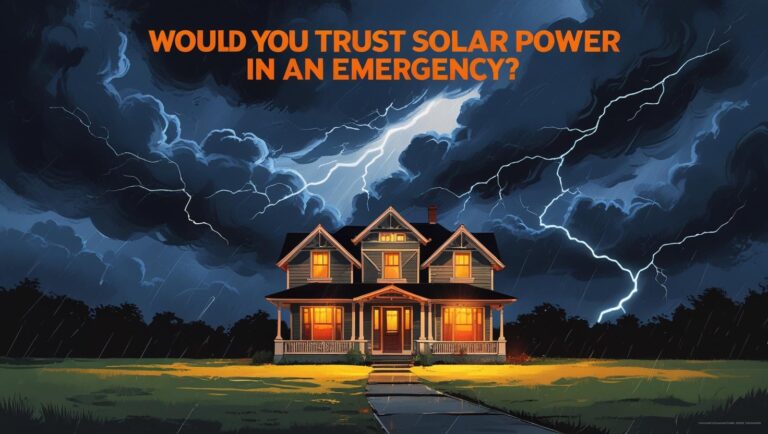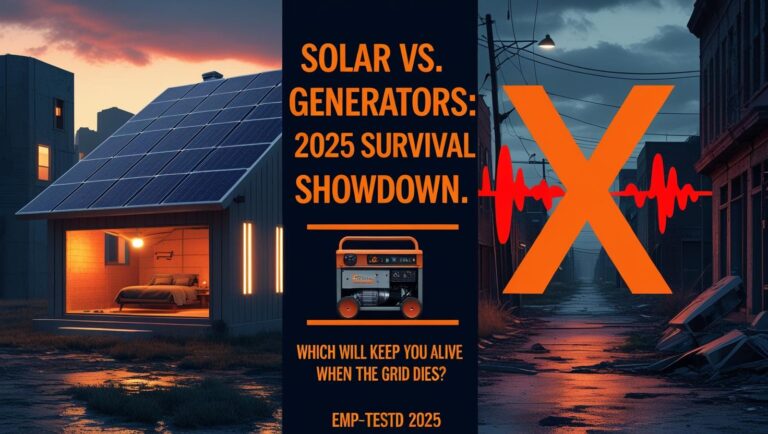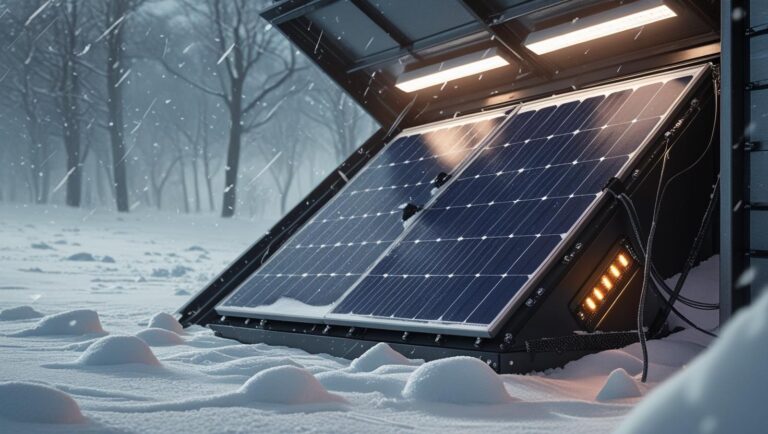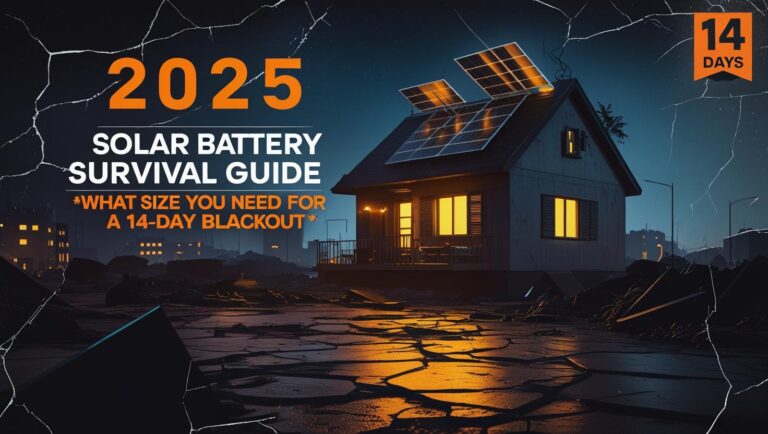2025’s Solar Tech for Preppers: What’s Worth the Hype?
Solar technology is advancing faster than ever, and for preppers, staying ahead means separating revolutionary tools from overhyped gimmicks. In this guide, we’ll break down the most promising solar innovations for 2025—backed by real-world testing and expert insights—so you can invest wisely in your off-grid survival setup.
🔗 For foundational tips, see our Emergency Power Backup Guide.
1. Ultra-Efficient Solar Panels
Perovskite Solar Cells: The Game Changer
- Efficiency: 30%+ (vs. 20% for traditional silicon panels).
- Durability: New coatings improve lifespan (15+ years).
- Prepper Perk: Lightweight, flexible, and ideal for portable setups.
⚠️ Hype Check: Still in early commercialization (expect DIY kits by late 2025).
Bifacial Panels: Double the Power
- Capture sunlight on both sides, boosting output by 10–20%.
- Best for ground-mounted systems (not rooftops).
2. Next-Gen Solar Batteries
Solid-State Batteries
- Safer: No fire risk (unlike lithium-ion).
- Longer Lifespan: 10,000+ cycles (vs. 3,000 for LiFePO4).
🔋 Compare options: Solar Battery Guide.
Graphene Supercapacitors
- Instant charging: Full power in minutes.
- Extreme weather-proof: Works in -40°F to 140°F.
💡 Best for: Emergency bursts (e.g., powering medical devices).
3. Portable & Flexible Solar Solutions
Solar-Powered Generators
- 2025 models (like EcoFlow Delta Pro Ultra) offer 8kWh capacity—enough to run a fridge for days.
⚡ Vs. gas generators: Solar vs. Generators Breakdown.
Solar Fabrics & Wearables
- Foldable solar blankets (100W+ for bug-out bags).
- Jackets with built-in PV cells (trickle-charge phones).
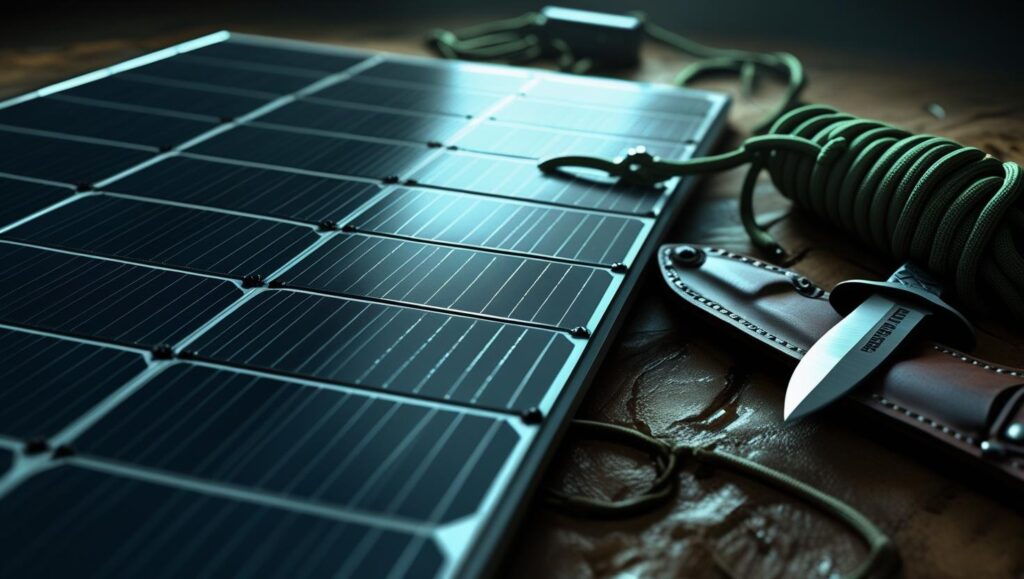
4. Smart Solar Integration
AI Energy Management
- Systems like Tesla Solar+ predict outages and auto-adjust storage.
- Prioritizes critical loads (e.g., freezers, comms).
Hybrid Systems
- Combine solar + wind + hand-crank backups for redundancy.
5. What’s Worth the Investment?
| Tech | Best For | Budget Pick |
|---|---|---|
| Perovskite Panels | Lightweight mobility | DIY kits (~$200) |
| Solid-State Batteries | Long-term storage | Not yet affordable |
| Solar Generators | Emergency backup | Jackery 2000 Plus |
Skip for Now: Solar roads, “invisible” PV windows.
Where to Buy 2025 Solar Tech (Without the Scams)
Cutting-edge solar tech attracts shady sellers. Here’s where to get legit gear:
- Perovskite Panels:
- Oxford PV (Pre-orders open Q1 2025) → Official Site
- DIY Kits: Check Perovskite-Info for vetted suppliers.
- Solid-State Batteries:
- QuantumScape (Auto partnerships only; wait for consumer models).
- Alternatives: Until 2026, stick with LiFePO4 (see our battery guide).
- Solar Fabrics:
- PowerFilm (Military-grade rollable panels) → Shop Here
⚠️ Red Flags: Avoid sites claiming “50% efficiency panels for $100″—these are recycled silicon scraps.
DIY vs. Pre-Made: What’s Smarter for Preppers?
| Factor | DIY Solar | Pre-Made Systems |
|---|---|---|
| Cost | 30–50% cheaper | Plug-and-play (premium) |
| Skill Needed | Electrical experience | Beginner-friendly |
| Survival Edge | Custom repairs in the field | Warranty support |
For Preppers:
- DIY if you’re skilled (or want a learning project). Start with small perovskite kits.
- Pre-made if you need reliability (e.g., EcoFlow’s disaster-ready bundles).
🔧 Pro Tip: Hybridize—buy a pre-made generator but add DIY solar blankets for redundancy.
3. Section to Add: “Reader’s Picks: Top Survival Solar Gear”
Placement: Before the conclusion (replace “Final Verdict”).
Text Content (Copy-Paste):
Reader’s Picks: Top Survival Solar Gear
“What’s in YOUR bug-out bag?” Here’s what Thrifty Volt readers recommend:
- Best Portable Panel: Jackery SolarSaga 200W (Folds to backpack size).
- Most Durable Battery: BioLite BaseCharge 1500 (Waterproof, 1,500 cycles).
- Wildcard Pick: LuminAID Solar Lantern (Doubles as phone charger).
| Tech | Best For | Budget Pick |
|---|---|---|
| Perovskite Panels | Lightweight mobility | DIY kits (~$200) |
| Solid-State Batteries | Long-term storage | Not yet affordable |
| Solar Generators | Emergency backup | Jackery 2000 Plus |
FAQ (Dropdown Format)
Are perovskite solar panels available yet?
Limited commercial kits (e.g., Oxford PV) are shipping in 2025, but DIY versions remain niche. Expect broader availability by 2026.
Can I use solid-state batteries with my existing solar setup?
Most require compatible inverters (e.g., Tesla Powerwall 3). Retrofitting is costly—wait for integrated systems.
How do solar fabrics compare to rigid panels?
Fabrics are lighter (50% less weight) but less efficient (12–15% vs. 20%+ for rigid panels). Ideal for mobility, not primary power.
Final Verdict
Focus on portable panels, solid-state batteries, and AI-driven systems for 2025. Avoid tech still in labs—stick to field-tested gear.
What’s your top solar prep? Share in the comments!

